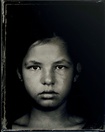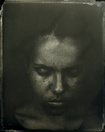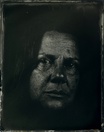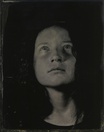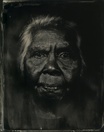Brenda L. Croft
Ngambri/Ngunawal/Ngunnawal Country, Kamberri/Canberra, Australian Capital Territory
2023
Displayed 2023 at Art Gallery of New South Wales
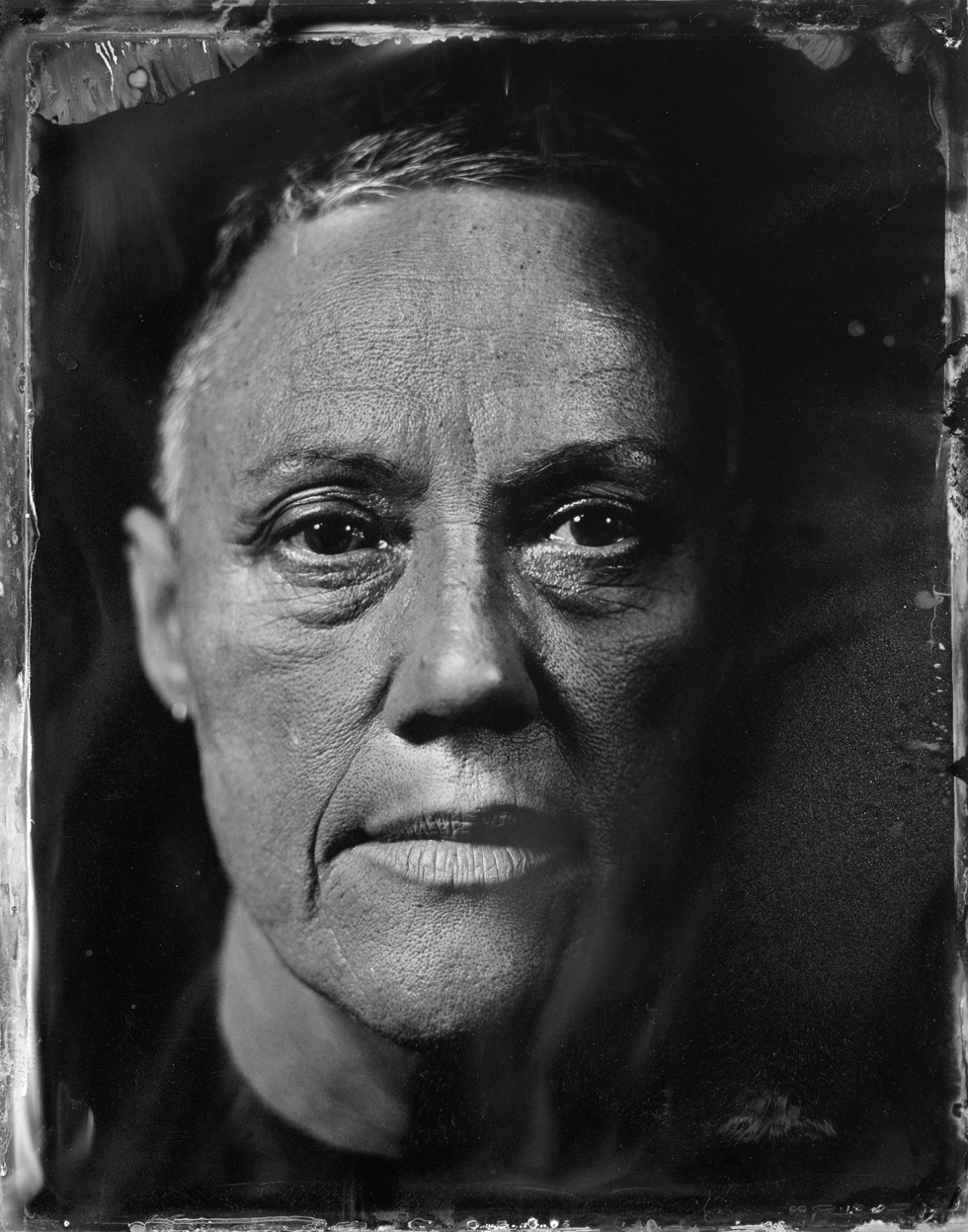
Brenda L. Croft
Gurindji/Mudburra/Malngin, Fitzmaurice region, and Anglo-Australian, German, Irish, Chinese heritage.
Born 1964, Whadjuk Nyoongar Country, Boorloo/Perth, Western Australia.
Lives and works Ngambri/Ngunawal/Ngunnawal Country, Kamberri/Canberra, Australian Capital Territory.
Brenda L. Croft is from the Gurindji/Mudburra/Malngin peoples from the Fitzmaurice region of the Northern Territory of Australia, and from Anglo–Australian/German/Irish/Chinese heritage. She has been at the forefront of the Australian First Nations and broader contemporary arts and cultural sectors as a multi-disciplinary creative practitioner – an artist, arts administrator, creative-led researcher, consultant, curator, and educator – since the mid-1980s.
Croft’s trans-disciplinary creative practice encompasses critical performative First Nations auto-ethnography, First Nations storying/storywork and historiography, cultural reclamation and re/presentation. She incorporates personal and public archives throughout her creative practice.
Croft lives and works on unceded, sovereign Ngambri/Ngunawal/Ngunnawal Country in Kamberri/Canberra, where she is Associate Professor, Indigenous Art History and Curatorship at the Australian National University.
Photograph: Brenda L. Croft, Brenda L II (Gurindji/Malngin/Mudburra) 2019, from the series Naabami (thou shall/will see): Barangaroo (army of me) 2019–22, with assistance from Prue Hazelgrove. Courtesy and © the artist.
Artist text
by Brenda L. Croft
‘There was one Eora woman who the British officers found very striking, and a little frightening too.’ (1)
Cammeraygal (2) woman Barangaroo (c.1750–91) was the second wife of a younger Wangal man, Woollarawarre Bennelong (c.1763/4–1813). (3) Or, in this context, he was her second husband. Better known as Bennelong, his name has been memorialised in numerous sites around Sydney, most notably Bennelong Point, now the site of the Sydney Opera House.
Barangaroo, renowned for her mastery as a fisherwoman and her staunch attitude towards the early colonisers, is less well known. Her people were custodians of North Head and Manly. At the time of first contact, the Cammeraygal were considered ‘the largest and most influential group in the Sydney coastal region.’ (4) Her people’s standing likely shaped Barangaroo’s attitude towards the new arrivals.
Barangaroo and Bennelong were documented as appearing ‘fond of each other,’ (5) while also sharing an intense and often volatile relationship. Near the final stages of Barangaroo’s pregnancy in 1791, some records have Bennelong pressuring her to give birth at Government House. Historian Grace Karskens informs us that Barangaroo refused Bennelong’s entreaty that she have the child at the premises of the colony’s leading representative. (6)
Barangaroo birthed her baby girl, Dilboong (Bellbird), on the outskirts of the township, alone. Not long after giving birth, Barangaroo – the feisty, determined, and spirited Cammeraygal woman – died. Her fishing gear was cremated with her, with Bennelong burying her ashes in the garden of Government House near the still-pristine waters of Warrane/Warrang (Sydney Harbour).
A few months later, the infant Dilboong died and was also buried in the grounds of Government House. Bennelong is documented as spending a number of nights mourning by her grave, and that of Barangaroo.
Barangaroo acts as a constant Ancestral guide for this series, which also responds to her namesake site – reclaimed and reconstructed land bordering Warrane/Warrang. First Nations names, clans, nations, and language words are used for place names, as de facto memorials to displaced, dispersed custodians – often corrupted by an unfamiliar tongue, with minimal reference to the origin except in heritage reports. This begs the question: Whose heritage are we honouring with these acts of corporeal, cultural erasure?
The naming of the Barangaroo precinct prised open the colonial project of denial and negation, calling up the Cammeraygal woman who inspired the site’s selection for a highly desired part of Sydney’s CBD. The colonial recognition of Barangaroo echoes across the centuries. Here she is, embodied and reflected back by the collective gaze – direct, challenging, averted, inward, beyond – of contemporary First Nations women and girls.
I/we come from t/here – if not through immediate cultural ties, then through more than two centuries of colonisation, displacement, erasure, and wilful cultural amnesia.
Don’t mess with me/us. I am/we are a force to be reckoned with. I am/we are not a place name for reclaimed, reshaped land; an obscenely exclusive playground for the wealthy to defile my/her name. Ignore me/us at your own peril. Naabami (thou shall/will see): Barangaroo (army of me).
(1) Grace Karskens, The Colony: A History of Early Sydney, Allen & Unwin, Sydney, 2009, p.401.
(2) Alternative spellings include Gammeraygal, Gamaraigal, and Cammeraygal. See Grace Karskens, ‘Cameragal people’, in The Dictionary Of Sydney, State Library of New South Wales, retrieved 15 February 2016, https://dictionaryofsydney.org/organisation/cameragal_people.
(3) See Keith Vincent Smith, ‘Woollarawarre Bennelong’, in The Dictionary of Sydney, State Library of New South Wales, retrieved 15 February 2016, http://www.dictionaryofsydney.org/entry/woollarawarre_bennelong.
(4) Grace Karskens, ‘Barangaroo, a woman worth remembering’, Sydney Morning Herald, 6 March 2010, retrieved 6 March 2010, http://www.smh.com.au/it-pro/barangaroo-a-woman-worth-remembering-20100305-pot6.html#ixzz40Bx3U2W6.
(5) Grace Karskens, ‘Barangaroo and the Eora fisherwoman,’ in The Dictionary of Sydney, State Library of New South Wales, retrieved 7 January 2023, https://dictionaryofsydney.org/entry/barangaroo_and_the_eora_fisherwomen.
(6) ibid.
Artist's acknowledgements
This project has been supported by the Australian Government through the Australia Council for the Arts, its funding and advisory body, and by the Lendlease Barangaroo Development Authority Artistic Photography Fellowship 2016–22.
The artist thanks Tamara Bosnjak, Dakota Dixon, Michaela Hamman, Emily McDaniel, Glenda Merritt, Simon Mordant, Emily Ravenscroft, and Annie Tennant for their support and encouragement.
The artist also wishes to acknowledge the contribution of Cracknell & Lonergan Architects and their team with special thanks to Peter Lonergan and Julie Cracknell, the Gujaga Foundation, and La Perouse and Metropolitan Local Aboriginal Land Councils regarding appropriate cultural terminology usage.
The artist acknowledges ANU School of Art & Design Photography & Media Arts Workshop, with special thanks to Dr. Rowan Conroy, Associate Professor Beck Davis, Emeritus Professor Denise Ferris, Jason O’Brien, and Associate Professor Katrina Sluis; Richard Crampton at Darkstar Digital; Prue Hazelgrove; Carriageworks, with special thanks to Blair French and Jack Berry; Sydney Festival 2023, with special thanks to Jake Nash, Charlie Coy, Jordan Rahlia, and Tufrey Workshop; and City of Parramatta, with special thanks to Miah Wright and Jeffrey Stein.
The artist extends her heartfelt gratitude and respect to all participants in the installation at the Art Gallery of NSW: Cathy Craigie (Gamilaroi/Anaiwon), Matilda House (Ngambri), Leah House (Ngambri/Ngunnawal), Suz Ingram (Wiradjuri), Lille Madden (Arrernte/Bundjalung/Kalkatungu), Anne Martin (Dharawal/Yuin), Mary Mumbulla (Gamilaroi/Yuin), Bronwyn Penrith (Wiradjuri), Lauren Penrith (Wiradjuri), Hetti Perkins (Arrernte/Kalkatungu), Thea Anamara Perkins (Arrernte/Kalkatungu), Maliyah Satour-Wright (Arrernte/Dunghutti/Gamilaroi/Gurindji/Malngin/Pertame/Worimi), Tristan Simms (Dharawal/Yuin), Miah Wright (Anaiwan/Dunghutti/Gamilaroi/Wirrayarray), Jilda Andrews (Yuwaalaraay), Jody Chester (Wiradjuri), Tjanara Talbot (Bundjalung/Wiradjuri), Dakota Dixon (Dharawal), Rhonda Clarke (Dharawal), Rene Campbell (Dharawal), Alison Page and Poppy Page McGilvray (Wadi Wadi/Walbunga), Maeve Powell (Ngiyampaa), Leanne Tobin (Dharug), Wendy Bunn (Walbunja/Djirringanj/Yuin), Linda Burney (Wiradjuri), Jade Christian (Samsep/Peiudu Clans of Erub/Meriam Mir), Maddie Croft (Gurindji/Malgnin/Mudburra), Sasha Croft (Gurindji/Malngin/Mudburra), Marlene Cummins (Guguyelandji/Woppaburra), Ali Golding (Biripi), Rayma Johnson (Wiradjuri), Kyra Kum-Sing (Malera/Bandjalan/Mitakoodi), Kirsty Beller (Dharawal), Bridgette Davison (Dharawal/Dunghutti), Harmony Ingram (Biripi/Dharawal/Dunghutti/Wiradjuri), Shallan Foster (Dharawal), Stacey Foster (Dharawal), Mila Grech (Dharawal/Dunghutti), Lowana Ingrey (Dharawal/Dunghutti), Nessa Ingrey (Dharawal/Dunghutti), Nessa Longbottom (Dharawal/Dunghutti), Cali Moore (Dharawal), Melinda Moore (Dharawal), Lola Ryan (Dharawal), Ruby Thomson (Dharawal/Wiradjuri), Noeleen Timbery (Dharawal), Sally Walker (Dharawal), Emily McDaniel (Kalari/Wiradjuri), Eva McDermott-Bebonis (Wakka Wakka/Mulinjali), Phillipa McDermott (Wakka Wakka/Mulinjali), Bernadette Riley (Willah/Tubba Gah clan/Wiradjuri), and Ann Weldon (Wiradjuri).
‘I pay my profound respects to Barangaroo, Cammeraygal Sovereign Warrior Woman, and Dilboong, her infant Cammeraygal/Wangal daughter – mother and child whose spirits imbue these works. In your footprints we walk, on your lands we live and work, in your waters we swim and fish, your memories we honour.
Finally, my acknowledgements and respect to Gadigal, Dharug, and Dharawal Ancestors, their descendants, and future Sovereign Warriors – remember what lies beneath always was, always will be, First Nations homelands.’
– Brenda L Croft (Gurindji/Malngin/Mudburra, Anglo-Australian, German, Irish, Chinese)
Brenda L Croft is represented by Niagara Galleries, Melbourne.




